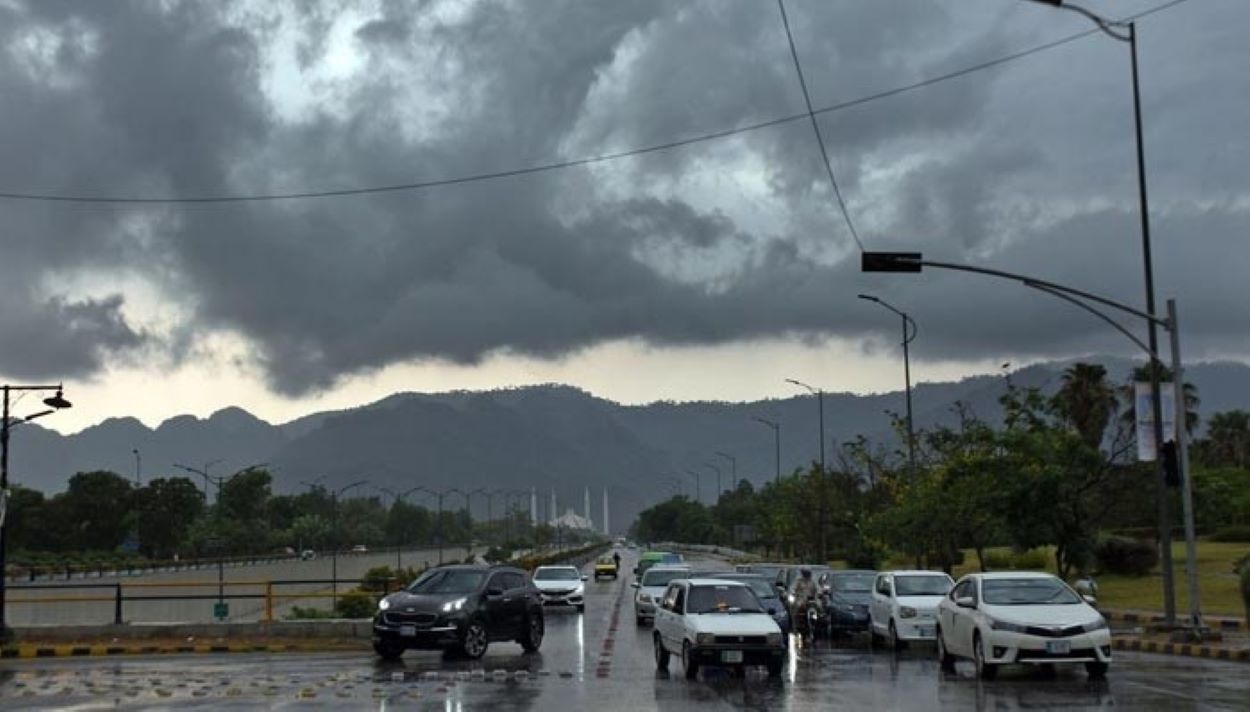The Pakistan Meteorological Department (PMD) has forecasted widespread heavy rains across Pakistan starting August 4, 2025, warning of potential flash floods in low-lying areas.
The monsoon system will impact northern and central regions, including Azad Jammu and Kashmir, Gilgit-Baltistan, Khyber Pakhtunkhwa (KP), Punjab, and the federal capital, through August 7. Southern regions like Sindh and Balochistan may see scattered rains by August 6, with increased activity expected around August 10, potentially extending into late September due to climate change.
The PMD cautions that overflowing streams, clogged drainage systems, and flooding in low-lying areas are likely. KP will face strong winds and thunderstorms, while Punjab, already heavily impacted, anticipates torrential rains.
PDMA Punjab issued an alert for medium to high-level flooding in the Chenab and Jhelum rivers from August 5, affecting districts like Lahore, Sialkot, Gujranwala, and others. A low-level flood is already reported at Khanki point in the Chenab and Indus River at Kalabagh, Chashma, and Taunsa, with Tarbela Dam at 89% capacity and Mangla at 61%.
پی ڈی ایم اے پنجاب نے مون سون بارشوں کے چھٹے اسپیل کا الرٹ جاری کر دیا#PDMAPunjab #MonsoonAlert #RainSafety #FloodAlert #StaySafePunjab #WeatherUpdate #PunjabRains #DisasterManagement #EmergencyAlert #Monsoon2025 #HeavyRainAlert #FloodPreparedness #StayAlert #Rescue1129 pic.twitter.com/6l7zLkZ7cQ
— PDMA Punjab Official (@PdmapunjabO) August 2, 2025PDMA and Safety Measures
PDMA Punjab, under Relief Commissioner Nabeel Javed, has instructed commissioners and deputy commissioners to stay vigilant. Rescue 1122 and civil defence teams are on high alert, with emergency control rooms activated. The public is urged to:
- Avoid crossing flowing water during floods.
- Stay cautious of landslides in Murree and Galliyat.
- Protect mud houses and dilapidated buildings.
- Limit unnecessary travel, especially for tourists.
- Contact PDMA’s helpline 1129 in emergencies.
Monsoon rains, vital for crop irrigation and water replenishment, have become more destructive due to climate change, rapid urbanisation, and poor drainage systems. Southern Pakistan, unusually dry so far, may see increased rainfall by mid-August, extending the season beyond its typical mid-September end. Authorities are preparing for potential infrastructure damage and displacement.
The looming monsoon spell poses significant risks to lives, property, and infrastructure, emphasising the need for robust disaster preparedness. Climate-driven extreme weather underscores the urgency of adaptive measures. For accurate weather updates, rely on PMD and PDMA sources to avoid misinformation.






